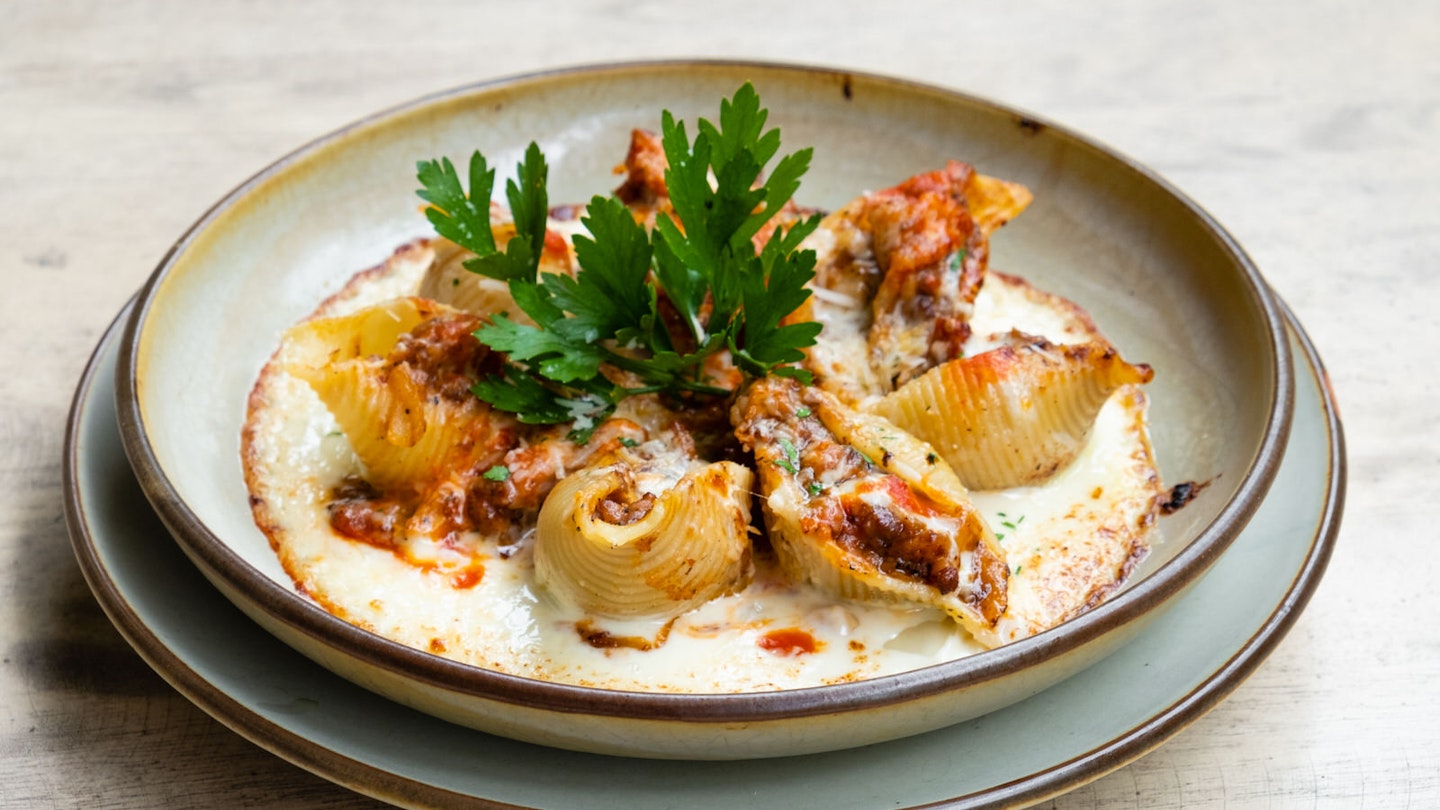Attention: World Pasta Day is 25 October. All diets are cancelled. Join the celebration by visiting the birthplace of your favorite pasta shapes.
The history of pasta is a contested tangled web that spans centuries and continents. Contrary to popular belief, it wasn’t the Chinese that first introduced pasta to the Italian peninsula. There’s evidence of a dish similar to lasagna (lagana, in Latin) in ancient Rome; and, there are even signs of thin Arabian pasta – known as itrija in Arabic – in what is modern day Palermo dating back to 1154, over 100 years before Marco Polo returned from China. Whatever the case may be, it is undeniable that today, the Italians have truly become the modern pasta masters. In honor of this special day, we’ve compiled a list of some of the most-loved pasta shapes and where to find them.
Penne from San Martino d’Albaro
Penne (meaning ‘pens’ in Italian) is one of the few Italian pasta varieties with a definite origin story. It was invented in 1865 by Giovanni Battista Capurro, a pasta maker in San Martino d’Albaro outside Genoa on the Italian Riviera, who invented a new diagonal cutting machine that made these pen-shaped icons.
Order the popular penne all’arrabbiata, a simple spicy tomato sauce normally served with pecorino romano (hard, salty Italian cheese) and found all over Italy.
Spaghetti from Campania
Spaghetti is arguably the most famous pasta shape in the world. It was first introduced to Italy by Marco Polo, who, while returning from China, stopped in Bandar Abbas in ancient Persia and tasted a local dish: spaghetti with prawns, called spahi by Persians (or sipahee), meaning soldier. He enjoyed it so much that upon his arrival back in Venice in 1295, he began promoting it all over Italy, and thus, Italian spaghetti was born.
Spaghetti alle vongole (spaghetti with clams), a classic dish originating from the Campania region, is today served all over Italy. You can order it in bianco (oil, garlic, white wine, salt, pepper, and parsley) or in rosso (with tomato and basil). If you find yourself anywhere near the sea, it is a must-try.
Tortellini from Emilia-Romagna
Emilia-Romagna is one of the epicentres of Italian gastronomy. Some of the most famous Italian ingredients are made around the cities of Modena and Bologna: parmigiano reggiano, balsamic vinegar, prosciutto di Parma, etc. The embodiment of this region is the dish tortellini in brodo (tortellini in broth).
Tortellini, meaning ‘little cake’ (also nicknamed ombelico or ‘belly button’), are ring-shaped egg pasta, traditionally filled with pork, cured meats, parmigiano reggiano, and nutmeg, served in a warm broth (beef or chicken). For a coma-inducing version, try the tortellini con crema di parmigiano, with an intoxicating cream and parmigiano sauce instead.
Tagliatelle from Bologna
The traditional tagliatelle is a flat egg pasta cut to an 8 millimeter thickness according to gastronomic regulations. Its origins are legendary and heavily debated (as are most stories in Italy), but its importance in Italian cuisine is undeniable.
In the culinary capital of Bologna, a city known to locals as ‘la dotta, la grassa, la rossa‘ (the learned, the fat, the red), order tagliatelle al ragù alla bolognese (pronounced boh-loh-nyay-zay) at Buca Manzoni for a quintessential Italian beef ragu.
Pici from Tuscany
Pici (known as ‘pinci’ in Montalcino) are thicker spaghetti pasta originating in Tuscany, in the historic hilltop town of Siena. They are traditionally rolled out by hand, creating variety in their shape and size.
They’re served in many ways, but most traditionally as pici alle briciole – a rustic dish of pici pasta, olive oil, garlic, pepperoncini, and day-old bread. Head to the family-run Ristorante Il Moro in Montalcino in the golden cypress-lined hills of Val d’Orcia, where Alessandro, the owner, serves this and other Sienese classics paired with some of the best wines from the region.
Bucatini from Amatrice
Bucatini, a thick hollow spaghetti-like pasta, with origins in Sicily, is most commonly served all’amatriciana, a popular menu item of the trattorie and osterie of Rome. However, strangely, the origins of this famous dish have nothing to do with the Italian capital; rather, it originates from the border town of Amatrice.
Bucatini all’amatriciana (sometimes alla matriciana) is a spicy tomato sauce with guanciale (cured pork jowl) and pecorino romano that deliciously coats this thick ‘pool noodle’ pasta, inside and out.
Spaghetti alla chitarra from Abruzzo
Spaghetti alla chitarra, a staple of Abruzzo, are spaghetti-like egg pasta with a squared cross-section, made with a traditional cooking instrument called a chitarra (guitar), where dough is pushed through taut steel strings (resembling the instrument) to form the noodles.
The traditional recipe of Teramo is spaghetti alla chitarra con pallottine – chitarra pasta with tomato sauce and little polpettine (meatballs). It’s the closest you can get to ‘spaghetti and meatballs’ in Italy.
Conchiglioni from Sorrento
From the baked lasagna of Emilia Romagna to timballo siciliano (baked anelletti ‘ring-shaped’ pasta) of Sicily, pasta al forno (baked pasta) is an Italian pasta dish with unending varieties.
In the seaside town of Sorrento on the Amalfi Coast, they serve the mouth-watering conchiglioni alla sorrentina – large shell-shaped pasta filled with ground beef/pork, mozzarella, ricotta, and parmigiano, bathed in a tomato/basil sauce, all baked in the oven to crackling perfection.
Orecchiette from Bari
Orecchiette, an ear-shaped pasta, originating from the region around Bari, the capital of Puglia, can be found as far back as the 12th-13th centuries. One of the most traditional autumn and winter dishes is orecchiette con cima di rapa (orecchiette with broccoli rabe). Broccoli rabe is grown all over Puglia, and come autumn, every trattoria in the region will have orecchiette on the menu.
Head to La Uascezze right in the historic centre of Bari for a traditional version of this paragon of Puglia.





